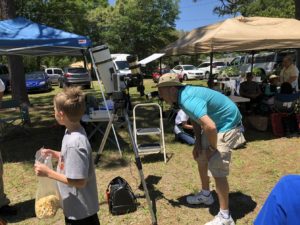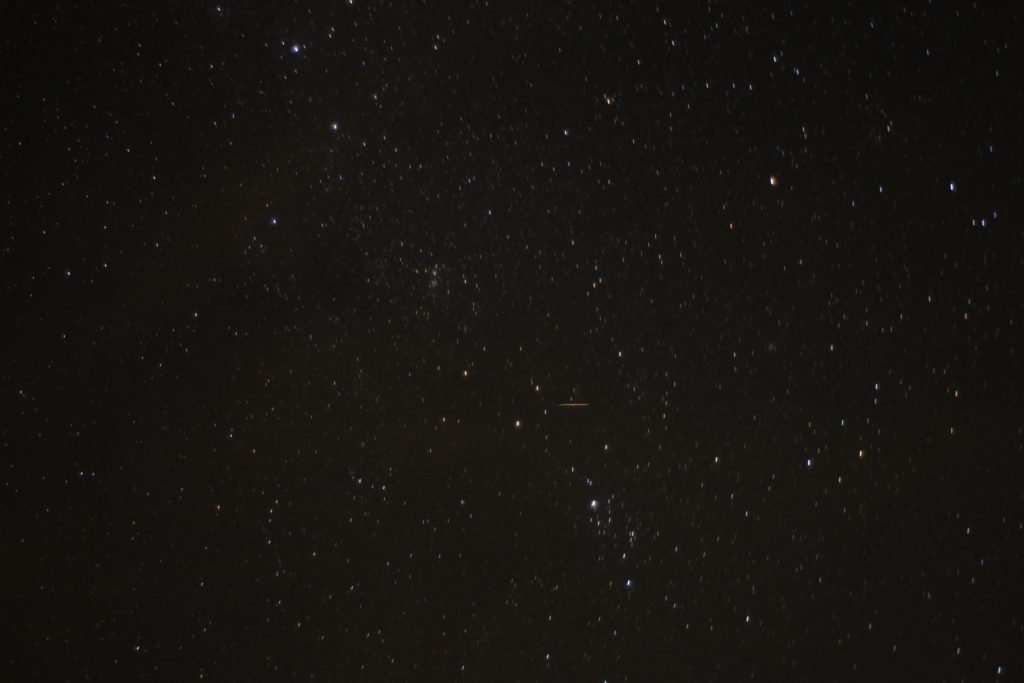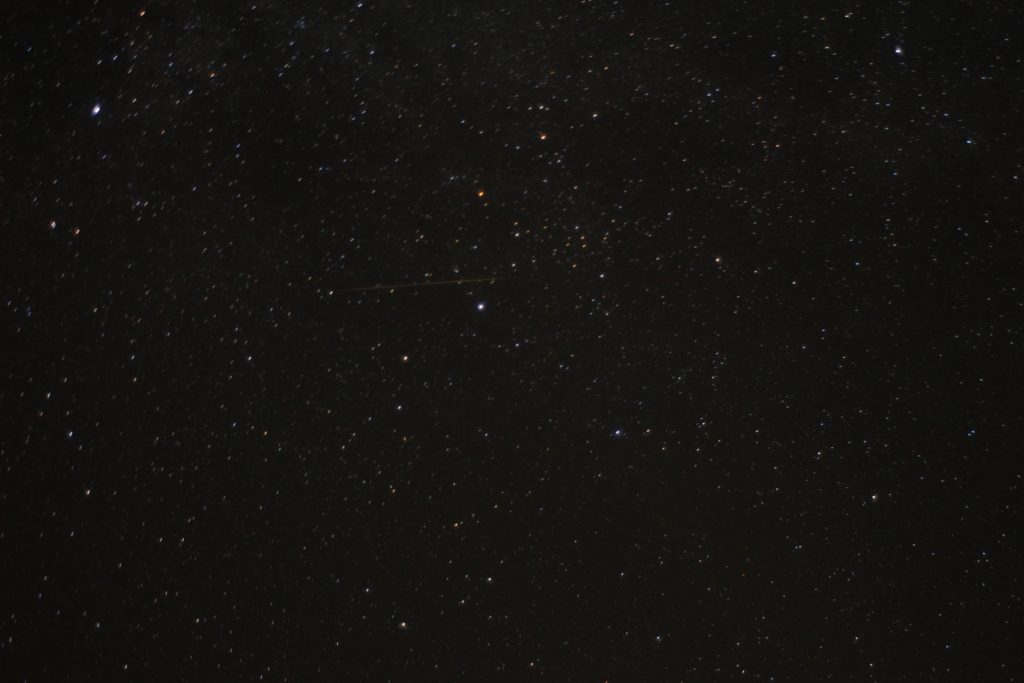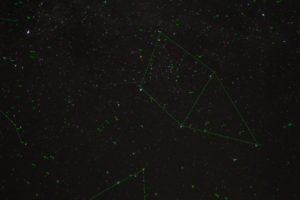The members of the NWFAA that supported our Eden Gardens State Park star gaze drove through light rain showers on the way to the park but the skies were clear when we arrived. As usual for this park we had several early guest observers arrive as we were setting up. They were rewarded by getting a view of a crescent Venus in broad daylight just before the planet set behind the treeline.
Eden Gardens is arguably our most photogenic star gaze location. The only problem with Eden Gardens is the ancient Spanish moss draped trees providing a 360° wall blocking every view of the horizon. However, the dark skies at the park more than make up for an obscured horizon.
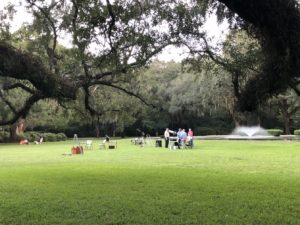 Trees, trees and more trees. |
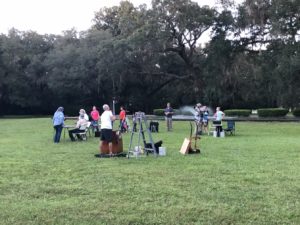 In the foreground, James sets up the club 16″ Dob. |
The members who braved the weather were:
- James Dubben
- Tom Haugh
- Dennis & Marietta Hausch
A 30% lit Moon was also visible before the Sun set. Then, as the sky darkened, Jupiter, Saturn and Mars all became visible spread out along the ecliptic. Jupiter’s Galilean moons were all situated to one side of the planet and Mars’ southern polar ice cap was plainly visible.
Ultimately, we had 45+ guest observers for the evening. We always encourage our guests to bring their scopes with them and join in the fun. This time we had a family bring their small Newtonian reflector along. Once we replaced the battery in their finder and aligned it, they spent the evening checking out the planets.
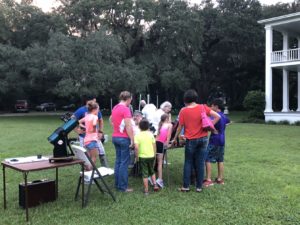 The family owned scope gets good use. |
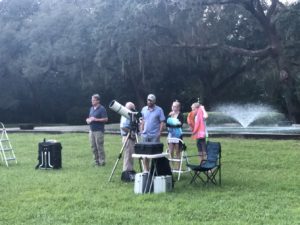 Dennis explains what is currently visible through his Maksutov. |
The guests included a sizable group of Girl Scouts. They tried to attend several of our previous star gazes but the weather always conspired against them. Their determination finally paid off.
Once again, we need to thank Marietta Hausch for the event photos.



